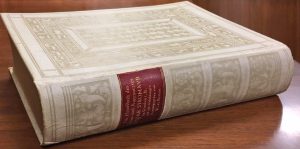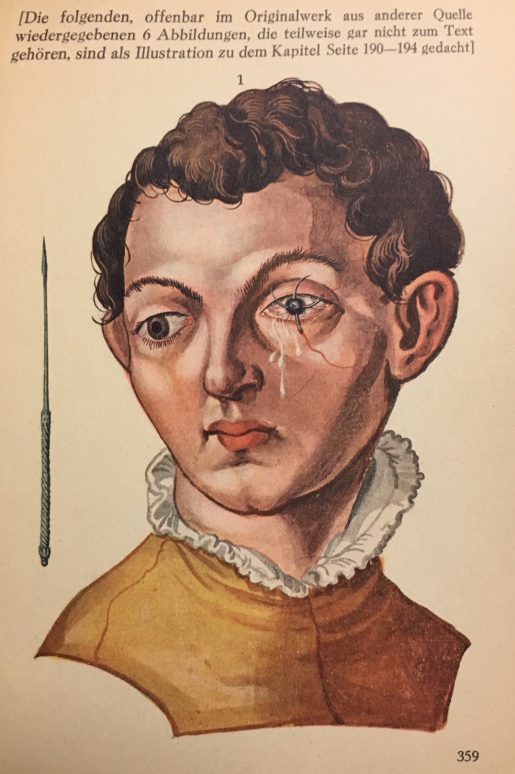 The book, Die Handschrift des Schnitt- und Augenarztes Caspar Stromayr in Lindau im Bodensee (Berlin 1925), in Falk Library’s Rodnan Room, is neither very old nor very rare. Its importance is that it brings to our attention an early ophthalmology text by Caspar Stromayr that was never published before.
The book, Die Handschrift des Schnitt- und Augenarztes Caspar Stromayr in Lindau im Bodensee (Berlin 1925), in Falk Library’s Rodnan Room, is neither very old nor very rare. Its importance is that it brings to our attention an early ophthalmology text by Caspar Stromayr that was never published before.
Caspar Stromayr was a 16th century German surgeon and ophthalmologist. A contemporary of Vesalius and Paré, he probably had some academic education, but mostly he achieved highly specialized knowledge through reading, consultations with other physicians, and empirical observations while practicing as a town surgeon in his native town of Lindau. He died there around 1566. In his lifetime, he did not influence 16th century medicine, his skills and knowledge were forgotten, and his eloquent unpublished work was buried in the library for almost 400 years. Today, however, he stands out among his contemporaries thanks to the manuscript he left behind.
His Practica Copiosa mostly deals with the surgery of hernia, to which there are two appended chapters on the surgery of the eye. The latter might have been intended to be a separate work, because the illustrations do not align with the original text, which has blanks where the illustration figures should be. Stromayr’s observations and thoughts were original and ahead of his time. The appended chapters on the etiology of cataracts and their treatment are of special importance because they are the first German ophthalmology work of known authorship.
 The richly illustrated manuscript was brought to light in 1925, when it was published by surgical historian Walter von Brunn. The English translation makes the text even more accessible. Nine out of 186 plates relate to the ophthalmology chapters. The plate presented on the right shows the eye with mature cataract undergoing a procedure with a threaded curved needle.
The richly illustrated manuscript was brought to light in 1925, when it was published by surgical historian Walter von Brunn. The English translation makes the text even more accessible. Nine out of 186 plates relate to the ophthalmology chapters. The plate presented on the right shows the eye with mature cataract undergoing a procedure with a threaded curved needle.
An exhibit on the history of cataract surgery is currently on display in the Falk Library lobby.
~Gosia Fort